Riding, And Racing, The Lightfighter LFR19 Electric Motorcycle - Part 2

Taking on the gas bikes - and winning!
There’s a lot to unpack in the Lightfighter story. This is why Part 1 was dedicated to the concept and build of the electric sportbike. As a quick refresher, the Lightfighter was born because Brian Wismann and Ely Schless wanted to prove an electric racing motorcycle could exist – and thrive – with a geometry-first design. They did just that, building an electric motorcycle around a Yamaha YZF-R1 swingarm, not a big battery. Knowing Wismann and Schless though, simply building the bike wasn’t enough. It had to be good. Hence why they equipped it with Öhlins suspension, Brembo brakes, and OZ Racing magnesium wheels. Further technical support came from Parker Hannifin, in the form of the GVM 210 motor, Kramer Motorcycles and their svelte bodywork, and Pirelli tires, who made sure the bike had the stickiest Diablo Superbike slicks available.
The final piece of the puzzle was getting a rider, and through some combination of dumb luck, good timing, and last resorts, I was the one who got the call. In Part 2 of the Lightfighter story, we pick it up from here. We’re done talking about the nuts and bolts of the bike. Now it’s time to get on with the task of riding, testing, and racing.
Into The Unknown
Sometimes the job of a motorcycle journalist can seem a little formulaic. Broken down into its essence, we’re basically riding motorcycles and writing about them (and in this new digital age we’re in, we’re talking about them on Youtube, too). Clearly it’s still the dream job for many, myself included, but if you stop to think about it a lot goes on behind the scenes before guys like me ever throw a leg over a bike. Developing a motorcycle is no easy task. Getting from the design sketches to a finished product is a complicated process, one which requires hours upon hours of testing to make sure the machine performs the way it should before being unleashed to the general public.
It’s a lesson I learned quickly, as the Lightfighter was stiff as a board the very first time I rode it during our shakedown test at Buttonwillow Raceway, circa April 2019. Oddly, my attention wasn’t primarily drawn to the power or the (lack of) noise – as far as I was concerned, it was still two wheels, a throttle, and a brake. You use the former as long as you can, and the latter as little as you can. The black magic was getting it all to handle. Instead of absorbing the road ahead, it was simply bouncing over the bumps, making the bike difficult to throw into turns and maintain corner speed.
Throughout the day turning the clickers at both ends resulted in marginal changes, which made it clear the spring itself – 9.5 N/mm in both tubes – was far too stiff. But without any spares to swap in, our first test was basically over. At the end of our day, I turned to the reserved Wismann, who seemed cautiously dejected, and asked what happens next.
“To be honest, I haven’t really planned anything else. Just in case you think the bike sucks and decide to pack it in,” he said.
Beaming, I replied back, “Are you kidding?! This thing is rad!”
Reinvigorated, Brian spent the days and weeks ahead fielding my scatter-brained thoughts, ideas, and questions about electrics, and how to make the Lightfighter go faster. In between, we were coordinating with our significant others, begging and pleading to sneak out of the house, finding another trackday to test and tune some more. Despite the first test being soured by stiff suspension, within a few laps I could already tell there was some real potential here. It was just hidden under some setup issues. It was time to put the geometry-first design to the test, and Wismann was more than happy to oblige.
The Plan
With Brian’s spirits lifted at the fact his pet project wasn’t dead in the water, we devised a plan. Since the American Historic Racing Motorcycle Association (AHRMA) features a class for electric motorcycles, we’d race with them. The first event circled on the calendar was at Buttonwillow Raceway Park, in the middle of August, four months away. If all went well, we’d take the show to Utah Motorsports Campus a few weeks later, then cap our program at the Barber Vintage Festival in October. AHRMA’s season finale and premiere event every year, the four-day spectacle brings together vintage (and modern) roadracing, motocross, and trials competitors from around the country and the world. Then there are the throngs of vintage motorcycle enthusiasts who come for the giant swap meet. In 2018, attendance estimates for the festival came close to 80,000 visitors. It’s an event not to be missed, and a great chance to show what the Lightfighter could do.
But first came testing. We swapped for a 9.0N/mm spring in one fork leg and an 8.5 in the other, creating a combined spring rate of 8.75N/mm. After that the 375-pound Lightfighter finally felt like a proper motorcycle, absorbing the road ahead and communicating what each end was doing. Even better was the fact we hadn’t moved the rebound or compression clickers to either extreme of the Öhlins damping parameters, and preload was in the middle of its range, too, giving us plenty of leeway for different tracks. By now I was sold on the premise of the machine. For kicks, we continued playing with different settings to better understand the bike, noting how the bike reacted after each session. Brian and I were really firing on all cylinders (pun intended) from a rider/crew chief dynamic, too. His methodical approach to testing (and documenting) changes, in addition to his ability to understand my feedback and how it relates to the motorcycle, meant each time the bike was on track we were not only learning something, but also improving – there were no steps back. By the end of our third day of testing, we were confident we landed on a good baseline setting we could take to any track. Concurrently, we were also playing with the power.
This is where the electric experience really deviates from a gas bike. For one, the power curve itself is adjustable with just a few keyboard strokes. An electric’s power curve is naturally softest at the beginning and end, with a wide, flat line in the middle. Brian had the ability to reshape that curve to my liking (to a point), moving the curve more toward either end. In the end, my feedback was simple: more everywhere! From the saddle, the power is deceiving. It comes on more linearly than any gas bike I’d ever ridden, a feeling I initially interpreted as being slow. That is until I was able to gauge my drive out of corners with other bikes around me. Still, the racer inside wanted more, which Brian obliged me with by incrementally upping available torque and the base speed from the motor via keyboard strokes. For the uninitiated (like I was), base speed has an impact on peak power. As Brian explains:
[Base speed] is the rpm at which the motor’s prodigious peak torque starts to decline. Although the bike was initially tested on a chassis dyno, the race track is the real test of the powertrain’s stability. A rider’s confidence is a fragile thing and probably the single biggest influencer in race performance. I would rather have a rider confident in a motorcycle that’s slightly down on power than have an unconfident rider on the most powerful motorcycle in the world. I took a conservative approach to increasing torque and power levels as the bike was proven, confidence was improved, and practice schedules allowed some controlled levels of risk to be taken.
We had to be careful, however, as powering up introduced more heat into the motor and required more battery voltage. Beautifully, said heat wasn’t something I ever felt radiating towards me. Nor was there a hint of vibration – two aspects of flogging a gas bike you don’t realize you love until it’s gone.
At roughly 120 hp, the Lightfighter’s horsepower number won’t astonish most, but the lack of a transmission meant there was never interruption of the power, unlike the constant shifting required on a traditional motorcycle. I could see this (albeit) small advantage as I was accelerating through Buttonwillow’s front straight. As others had a momentary loss of power through each shift, the Lightfighter continued through its acceleration path, uninterrupted. And while liter-class sportbikes would eventually pull away from me with their top-end power, the Lightfighter was never far behind. What’s more, the astonishing braking power provided by the twin 330mm rotors and Brembo GP calipers meant I could outbrake anybody on track by a considerable margin, nearly negating my power disadvantage. It was truly remarkable.
I noticed, however, that because Brian minimized the regenerative braking function to reduce heat to the motor, there was nothing slowing rear wheel speed under hard braking. It felt like the rear tire was literally pushing the rest of the bike forward while I was trying to stomp on the brakes in the front. Typically on a gas bike downshifts, engine braking, and a slipper clutch would solve this issue. Sure I could use the rear brake lever, but it would be especially difficult to manage for right turns. Brian’s solution was simple. “What if we put a rear brake lever where the clutch lever typically would be?”
“Like a scooter?”
“Like a scooter.”
Genius.
Having – and using – three brake discs at my disposal was a revelation, allowing me to get on the brakes later, slow down quicker, and make fine line corrections mid-corner with a simple tap with my left pointer finger. It’s no wonder more and more top-level racers are starting to use a secondary lever instead of a thumb brake (it’s typically next to the clutch lever).
Not All Roses
Still, Buttonwillow exposed some weaknesses on the bike. The least important was the strength of the rear brake. Even with one finger I could lock it up, causing it to slide a bit and forcing me to put less pressure on the lever. We could have chamfered the pads or put a little air in the brake line to make it weaker, but ultimately we chose to do nothing. There were bigger fish to fry.
Next, despite how cramped modern day sportbikes are, the Lightfighter is incredibly roomy. Too roomy, in fact. In a full tuck, my arms would actually be too outstretched, making me use more energy than I’d like getting back on top of the bike coming out of a turn on acceleration. Using a butt pad was a simple fix and Brian stole his wife’s foam yoga block, shaping it to fit the tail section and stopping me moving backward more than necessary. A pretty clever solution, I’d say (and yes, she got another one).
The biggest issue was one not so easily fixed. In all my time riding at Buttonwillow, I’d never noticed a bump at the apex of the fast, sweeping Riverside turn on the production bikes I’d ridden through there. On the Lightfighter, said bump would upset the chassis each time, making me pause to let the chassis settle before accelerating again. This was happening even after the spring swap. Then it dawned on us: since the motorcycle is banked over to the extreme, the frame was acting as the bike’s primary suspension, not the fork and shock. In our case, there wasn’t enough chassis flex – a result of Brian and Ely deciding to overbrace the frame in the name of safety. A secondary issue of the overbracing is the lowest edge of the frame, used to mount the electric motor, would hang too low to the ground. An issue I partially solved by chamfering the leading edge… with the ground.
Let’s Go Racing!
Despite those issues, we were still reeling off decent lap times (1:58-ish) even in trackday traffic. We realized we needed to set our sights higher than just racing against other electrics – to Formula Thunder. AHRMA’s fast guy class, F-Thunder is where big V-Twins come to play. Think Ducati 1299 Panigales and Pierobon X-85s. There was no messing around now. It was sink or swim.
Not knowing what to expect, the Buttonwillow round fast approached and greeted us with 108º temps on the first day of practice. The California desert in the summer is brutal, but it would serve as a good test for both men and machine. Short of going into a full race recap (which we won’t do), the Lightfighter performed flawlessly.
Unlike most other club organizations in the country which run six-lap races, nearly all of AHRMA’s races are eight laps. Thankfully, the collective group this weekend voted to shorten the races to six laps due to the scorching heat. We were confident Lightfighter could survive eight laps, but we definitely weren’t mad about the reduced lap count! If you followed along with my exclusive First Ride (and race) of the Kramer GP2, you’ll remember I was beat to the line consistently by Tom Wilbert and his Pierobon. He was back this year, along with Jeff Graham aboard his Ducati 1299 Panigale, and the three of us battled all weekend long, the two Italian bikes gapping me with horsepower, only for me to reel them back in under braking each lap.
Not sure how I would gain enough of an advantage over Wilbert and Graham to lead over the finish line, I realized mid-race I could hear the loud roar of both of their V-Twins over the quiet whine of my electric motor. I could hear when they got on the gas (later) and when they let off (earlier) compared to me. I had them. Sure enough, using this advantage I scared myself half to death braking later than I ever have into Turn 1 early on in the first race. The kamikaze move stuck, and I managed to build a gap – made obvious by the growing silence around me each lap as their exhaust notes grew fainter and fainter – that I was able to maintain to the finish to win the race! It was an excellent debut showing for the Lightfighter, exceeding all of our wildest dreams.
Until it wasn’t. Not more than 10 minutes after returning to my pit, we were given the unpleasant news that we were disqualified. According to the letter of the F-Thunder rules, the class is for modern V-Twins and Triples. Technically speaking, electrics weren’t allowed. Hence, a DQ. Based on the fanfare the F-Thunder raised at Buttonwillow (it truly was an entertaining and exciting race) Tony Pentecost, the lead AHRMA official, suggested (encouraged) I petition to allow the Lightfighter into future races. Long story short, the board agreed to allow the bike to race the rest of the season, on the condition that I be entered on an Exhibition status earning no points. Since we weren’t chasing a championship, we agreed.
Unfortunately, a warning message appeared on the dash halfway through Race 2 and, not wanting to harm the bike, I pulled in – only to later discover (after Brian pulled the data) it was an erroneous warning light! It was caused by a momentary loss of the CAN data transmitted to the dash, meaning the bike was fine all along. A bitter way to end the weekend, that’s one of those unforeseen issues you get with a garage-built special. Nonetheless, Brian was able to find a bit of good news to go home with. Before pulling off I was able to clock a 1:53 laptime, a whole two seconds quicker than the day before, and five seconds faster than when we tested! Utah and Barber couldn’t come soon enough.
In all honesty, the Utah round wasn’t very memorable except for one issue we’ll get to in a moment. We confirmed the baseline settings from Buttonwillow transferred well to Utah Motorsports Campus’ East Course and only made minimal suspension changes. Top speeds at UMC East are lower than at Buttonwillow, so the main difference was a different rear sprocket (48-tooth vs 46-tooth for Buttonwillow) for better drive off the corner. Wilbert and Graham were again at Utah, but both seemed to be chasing setup issues. I was fortunate enough to beat them both handily on Saturday and Sunday, but it was only good enough for second place as Josh Bronfman, of Rickdiculous Racing fame, soundly kicked our asses aboard his tricked-out Ducati 1199 Panigale R.
Sunday would prove to be a different kind of ass kicking for us, as moments before it was time to head to grid for the second race of the day and final race of the weekend, the bike wouldn’t start. Brian and Ely feverishly ripped off bodywork and pointed their multimeter everywhere they could, but there simply wasn’t enough time to make the race. The culprit: A blown fuse in the DC-to-DC converter, used to power the 12v sub-systems on the bike. It’s always the five-cent part…
The Big One
With Barber finally upon us, the weekend started rather rough. The recent repave to the track meant the surface was incredibly smooth. So smooth, the settings we set at Utah suddenly made the bike feel like a pogo stick. The rear was bouncing on acceleration and it became incredibly sluggish changing directions. We could also see I was blowing through the front fork travel, though that strangely wasn’t bothering me as much on track. After explaining the bouncing I was feeling, it dawned on Brian, Ely, and I the need to stiffen the damping to account for the glass-smooth surface, and after slowing the rebound and tightening a bit of compression, we quickly had the suspension back on the right path.
Unbeknownst to me, however, was Brian moving the wheelbase back to 56 inches while changing tires and getting the bike ready for Barber. We had tested this setup at Buttonwillow but didn’t like it. I believe “slow to steer” were my feedback notes to Brian. However, the switch to the 48-tooth sprocket in Utah meant adding an additional link to the chain, extending the wheelbase. Thankfully there aren’t as many quick transitions at Utah compared to Barber, so the effects were less problematic. When we realized we were going with the 50-tooth sprocket at Barber but needed to shorten the wheelbase, that gave us the opportunity to suck the rear axle back in. By moving the wheel to the inner end of the chain adjuster, the wheelbase shortened an entire inch, completely transforming how quickly the Lightfighter was to move side-to-side. Just like at BW, crunching the wheelbase by an inch made it feel like a whole new bike.
Once again, the Lightfighter used its key advantages: perfect starts and deep braking, combined with seamless power delivery, to get a leg up on the field. Barber’s medium- to high-speed transitions were no longer a herculean effort thanks to the shorter wheelbase, and it was difficult for all but the biggest of V-Twins to use their superior power advantage around Barber’s undulating layout.
During Saturday’s headliner, the Barber Cup, where pros like Geoff May (EBR 1190RX Superbike), Taylor Knapp (Ducati 1299 Panigale), Steve Rapp (Ducati 1299 Panigale), and Mr. Daytona, Scott Russell (Pierobon X85R), all lined up, I was able to qualify the Lightfighter in seventh. During the race, as the other riders were carefully releasing the clutches on their powerful Twins, the LFR19 launched so hard off the line the rear Pirelli tire sticker left a 3-inch by 2-inch rectangle imprint on the ground every four feet, as the tire went ‘round and ‘round. We reached Turn 1 in fourth before getting gobbled up by the fast guys, eventually returning to seventh. By the end of the first lap my nerves had finally calmed down enough to focus on the task at hand. Good thing, too, as I was caught in a battle for position with Buell-shod Walt Sipp and Nate Kern, riding a BMW R nine T. Eventually, handling woes made Kern drop back, but not before Sipp pulled a move on me, dropping me to eighth.
On the last lap, practically set for an eighth place finish, disaster struck as, four turns from the end, all power immediately cut out. I coasted as far as I could – ready to push the bike over the line if it could just crest the final turn – but alas, she pulled to a stop on the uphill climb two turns from the line. Before the race Brian had upped the motor torque a small percentage, pulling his best Mr. Scot impression from Star Trek and givin’er all she’s got, Cap’n. Though he’d warned me to pull in if the volt reading on the dash hit 315, last I looked it only got down to 320. Were Brian’s calculations wrong and I truly was out of battery? Turns out, the answer goes back to the five-cent part. Once again, for reasons unbeknownst to us, the 12 Volt fuse blew. Just like it did at Utah. It wasn’t the battery after all.
Looking to make amends with another (higher rated) fresh fuse installed, Sunday’s Formula Thunder was a shot at redemption. Now, with plenty of motivation and a bit of the red mist in my eyes, I was determined to bring the bike home on the box. After getting blocked at the start, the Lightfighter was able to rocket past a Triumph Daytona 675R by Turn 5 and I could hear Walt Sipp’s Buell close behind. However, as the laps wore on, it was so easy to remain consistent with the LFR19 and Sipp’s Buell became harder and harder to hear behind me. Knowing the last thing I needed was to toss the bike down the road, a smart and steady pace was what I focused on the final lap, coasting across the finish line with raised fists in the air. Another victory for the Lightfighter! More than “just” a victory, achieving it at this event vindicated our first win at Buttonwillow, which we were subsequently disqualified for. It proved our performance wasn’t a fluke, and that racing against this caliber of gas bikes is where the Lightfighter belongs. To say the win felt good would be an understatement.
The final tally has the Lightfighter taking home two wins and two second place finishes in the Formula Thunder class, along with four victories in Formula Lightning Extreme. The Lightfighter also became the first electric bike to ever qualify for the prestigious Barber Pro Cup Challenge. Not bad for two guys and a motojournalist working out of a van…
What the Future Holds
Honestly, winning races aboard the Lightfighter against other electrics didn’t surprise us (which we did, but didn’t cover because it was like bringing a gun to a knife fight). Winning races head to head with some of the fastest gas bikes in the series? Now that was beyond our wildest dreams. Having read about Wismann’s electric racing past, I had a feeling the bike would be good, but this was completely unexpected. Nonetheless, the team’s accomplishments proved the concept worthy from a mechanical perspective. Getting a motorcycle like this into production, for a price people would actually pay, is another story entirely, as anyone with experience with supply chain management can tell you.
Interestingly enough, with the recent announcement of Pikes Peak pausing motorcycle competition and the Isle of Man TT putting the TT Zero race on hiatus, there are few avenues to show what an electric race bike can do. Except, of course, for the MotoE series running concurrently with MotoGP. Built to race a similar distance as the Lightfighter, on paper anyway, it would seem the two would make for an interesting comparison. If only…
As it stands, we’re the only ones racing an electric against gas bikes – and winning. We’d like to try our luck some more in 2020, taking in all the lessons we learned this year. It’s safe to say the Lightfighter proved its worth and turned heads everywhere it went. More than just proving a garage-built electric motorcycle, albeit a highly sophisticated one, could work with a geometry-first design, we also wanted to excite race fans onto another form of competition motorcycle. Now that we have, we work on making it better. Lightfighter v2.0 is already under way, and both Wismann and Schless have some clever ways to improve upon Lightfighter 1.0. 2020 should be an exciting year!
*Some might consider it cliche, but it’s absolutely worth thanking the sponsors who helped make this project possible: Parker Hannifin, Pirelli USA, Bell helmets, Kramer Motorcycles, Motec, Backmate, Cascadia Motion, Wismann Racing, Schless Engineering, Zero Motorcycles for allowing Brian to continue to play with race bikes, Motorcycle.com for obvious reasons, and most of all our respective families. Your support was invaluable and we thank you.*

Troy's been riding motorcycles and writing about them since 2006, getting his start at Rider Magazine. From there, he moved to Sport Rider Magazine before finally landing at Motorcycle.com in 2011. A lifelong gearhead who didn't fully immerse himself in motorcycles until his teenage years, Troy's interests have always been in technology, performance, and going fast. Naturally, racing was the perfect avenue to combine all three. Troy has been racing nearly as long as he's been riding and has competed at the AMA national level. He's also won multiple club races throughout the country, culminating in a Utah Sport Bike Association championship in 2011. He has been invited as a guest instructor for the Yamaha Champions Riding School, and when he's not out riding, he's either wrenching on bikes or watching MotoGP.
More by Troy Siahaan



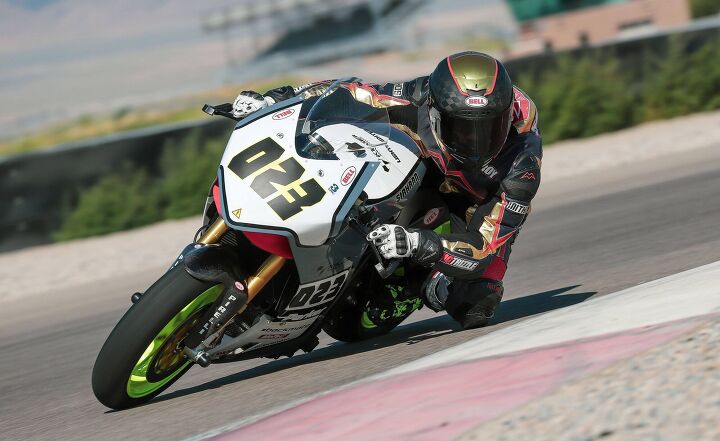
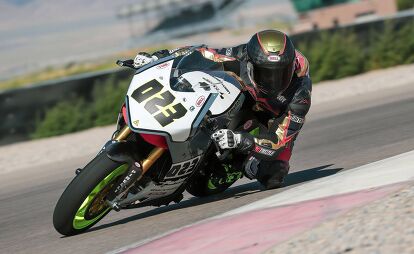










































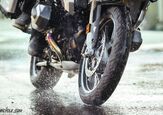
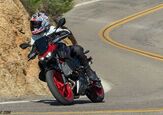
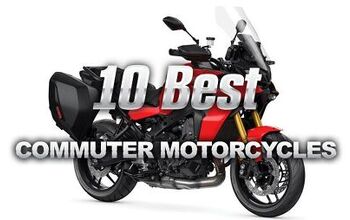


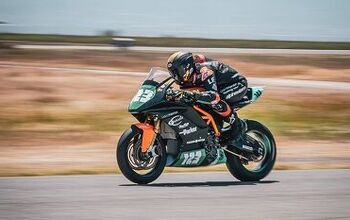


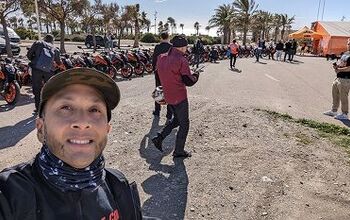


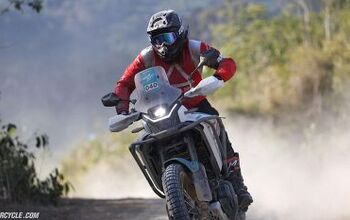


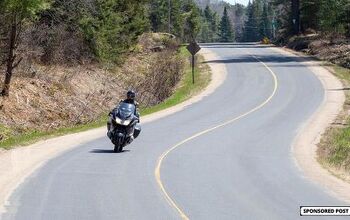
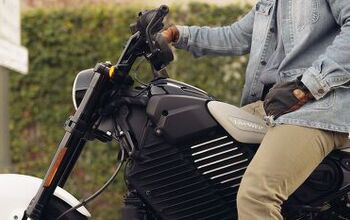


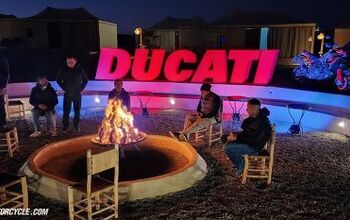
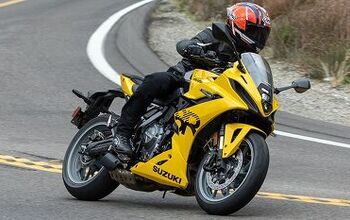
Comments
Join the conversation
Brilliant effort, both on the parts of Wismann and Schless, and Troy, for exploiting the electric's unique characteristics and prevailing against serious competition.
All I can say is wow! Dude, you rode the wheels off that thing!
Great project! Any update on the Lightfighter for 2020?